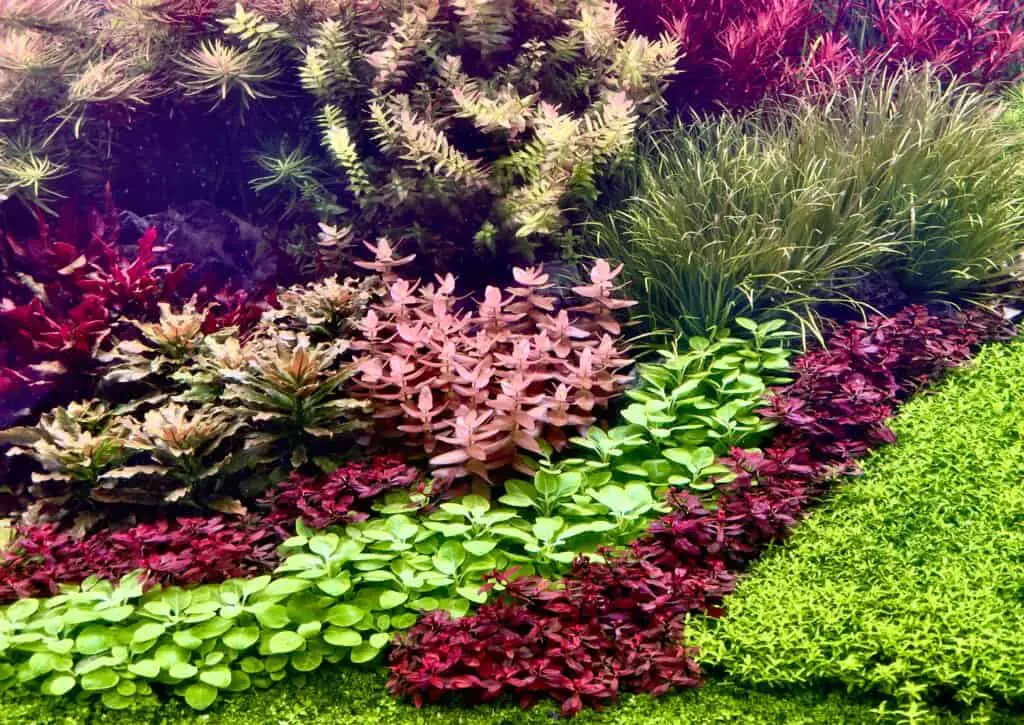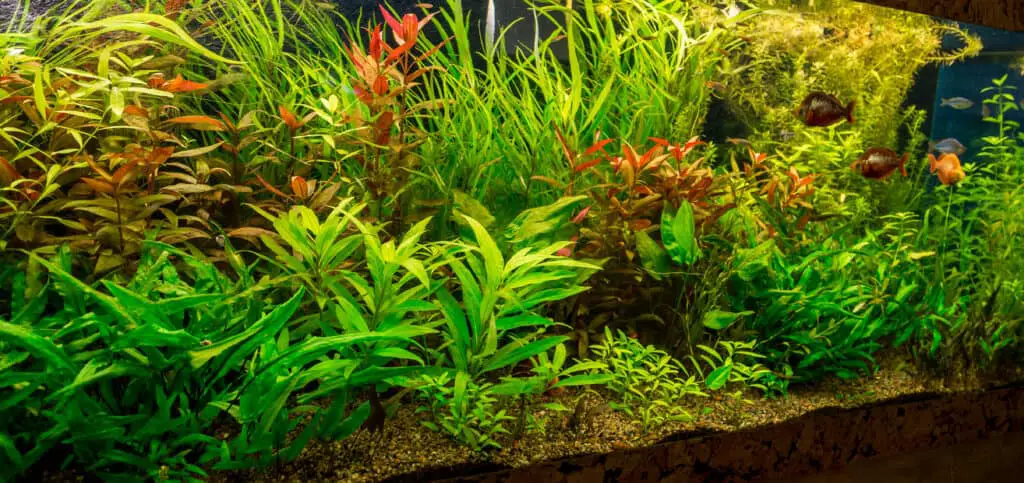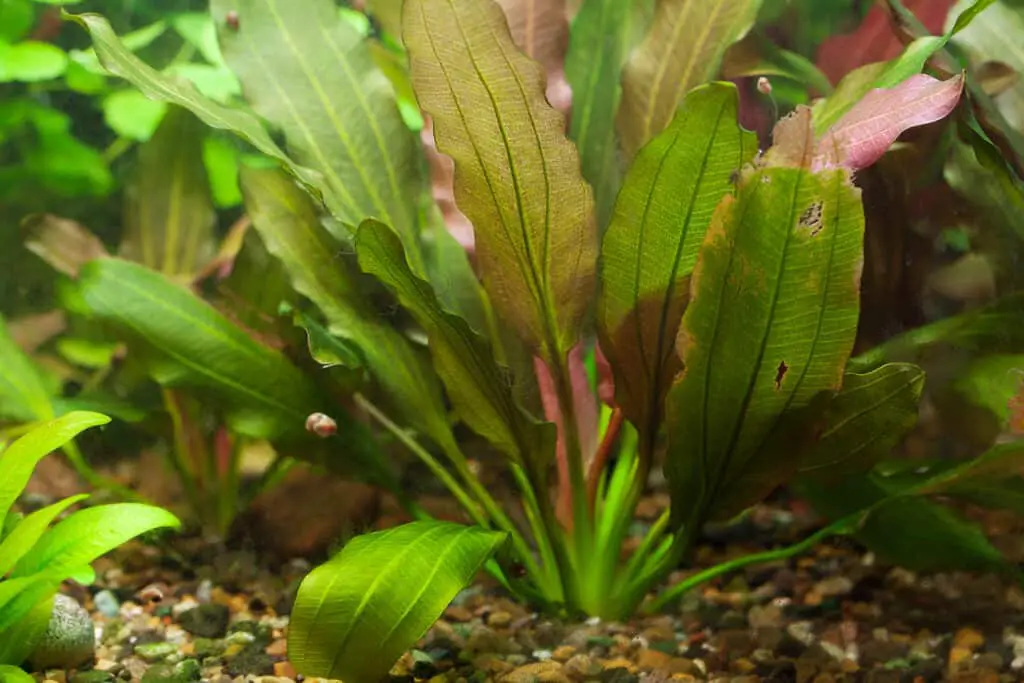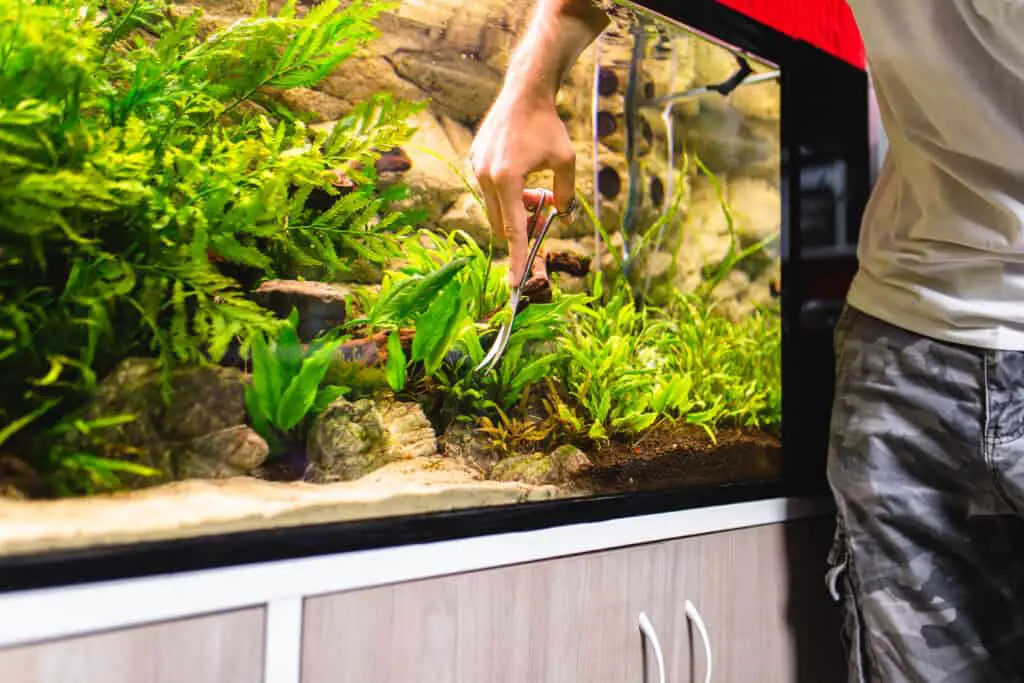
There is often a large focus on ensuring the health and feeding of aquatic life in a tank while overlooking the importance of monitoring and maintaining the nutrition and health of aquatic plants.
Feeding your live plants is not only about making sure they stay alive, but to helping ensure that they can thrive, and provide the maximum amount of benefits to the overall health and balance of a tank’s ecosystem
In general, a good rule of thumb is to fertilize your aquarium plants with a balanced liquid fertilizer every one to two weeks. Rooted plants will also benefit from root tabs that should be added to the surrounding substrate every one to two months. This will vary both on the number of plants in the proximity of the root tabs and the plants’ size
Let’s explore the best frequency and ways to feed your aquarium plants, and how to find the correct balance in feeding your plants to allow for the greatest overall benefits possible for a thriving tank.

Fertilizing Frequency: Balancing Nutrient Supply and Demand
Knowing how often you should feed your plants, and the amount to use comes down to the type of plants they are and the amount you have.
Root tabs are a great supplemental nutrient addition that comes in a tablet form, where you simply place the substrate near the plants in a grid formation.
Over time these nutrients will be used up by the surrounding plants and will need to be replaced with new root tabs.
If added in a grid pattern, you can generally expect to replace them every two months.
However, these tabs only benefit plants that gain their nutrients from the ground.
Plants will also benefit from liquid fertilizers.
The amounts for these are generally based on the amount of gallons your aquarium is.
You will generally want to add this type of fertilizer weekly, but again this can vary based on the type and amount of plants you have.
Other things like having longer periods of light, and adding CO2 may require additional or more frequent adding of nutrients, as the additional light and CO2 can greatly increase the amount plants will grow, increasing their demand for nutrients.
As with many things in the fish-keeping hobby, many things are of trial and error. If you notice signs of nutrient deficiencies, then you know there needs to be an adjustment made.

Types of Aquarium Plants: Nutrient Delivery
Though most aquarium plants will for at least some part feed from both their leaves and roots, there are tendencies for certain plants that will allow them to benefit more from different nutrient deliveries.
Knowing the type of aquarium plants, and how they receive their nutrients can help you determine how you should be delivering their food.
In general, plants that produce runners, carpeting plants, plants with bulbs, sword plants, like the popular Amazon sword plant, and cryptocoryne plants tend to feed with their roots from the surrounding substrate.
These plants will benefit the most from root tabs being placed in their vicinity.
Though other plant types that are in the substrate will benefit some from root tabs, they will have increased benefits from liquid fertilizers in addition to floating plants.
Choosing the Right Fertilizers for Your Aquarium Plants
When choosing the right fertilizer, you should first understand what needs to be in it to benefit your aquarium plants and make it worth getting.
When it comes to Aquarium plants there are two types of nutrients, macronutrients and micronutrients.
Macronutrients are the main nutrients needed for plants to grow healthy, these are Potassium (K), Phosphorus (P), and Nitrogen (N). As with the name, these are nutrients that are required in much larger amounts compared to the other nutrients and should be considered when choosing your plant food to ensure there are good amounts of these three.
Micronutrients are nutrients that plants need in trace amounts, but they are still important to the overall health and well-being of the plants.
The seven essential micronutrients include Iron (Fe), Manganese (Mn), Chlorine (Cl), Copper (Cu), Boron (B), Molybdenum (Mo), and Zinc (Zn).
When looking at a fertilizer, be sure that most, if not all of these nutrients are part of the ingredients.
There are several recommended fertilizers and root tabs that will meet this criteria to provide your aquarium plants with the perfect amount of nutrients.
Liquid Fertilizer Recommendations
 |
 |
Aquarium Co-Op Easy Green Fertilizer |
Root Tab Recommendations
| Aquarium Co-Op Root Tabs |  |
 |
Risks and How to Prevent Over-Fertilizing Your Aquarium Plants
Though feeding your aquarium plants allows them the best chance to thrive, it is important to do this in moderation and only when necessary.
A common misconception that can lead to over-fertilizing is that more fertilizer results and quicker growing plants.
It may seem that way, but there comes a point where the extra nutrients are at levels that the plant can’t use because of other factors not being increased.
This includes CO2 and lighting.
All necessities for plant growth would have to be increased to have a chance of expedited plant growth.
It is all about balance, and just like the lack of fertilizing and your plants having nutrient deficiencies, some risks and problems can occur if you were to overfeed.
Algae Blooms
A big visual cue that you may be over-fertilizing in your tank is if there is an algae bloom in your tank.
With all the excess nutrients, algae will utilize them, continuing to grow as they continue to be available.
Not only does this change the visual appeal of your tank, but it will also cause issues with your other plants, as it grows on the surface, and the plants themselves, lowering the amount of light reaching those plants.
Waste of Fertilizer and Money
Plants can only use so much of the nutrients given to them, and there comes a point where if there are too many available, they will no longer absorb them.
At this point, the added fertilizer is being wasted which not only can cause problems in the tank, but you will essentially be wasting money as the fertilizer is being used without adding any benefit.
You can prevent overfeeding your aquarium plants by keeping your dosing constant unless a visual change tells you otherwise.
Start with the recommended dosing and frequency of the specific fertilizer you choose.
If your plants show signs of nutrient deficiencies, then consider increasing the dosage.
If they are showing signs of overfeeding, then reduce your dosing.
Allow your plants to tell you and dictate at what rate they need fertilization.

Integrating Plant Feeding into Aquarium Maintenance Routine
Make considerations when adding plant feeding to your overall aquarium maintenance by knowing what you want to do.
If you want to begin adding liquid fertilizer, be sure to give enough time between adding the fertilizer and siphoning water out for your regular water changes to allow the plants to have their opportunity to use it.
Also, try to remember, or make a diagram of where you place your root tabs, since when cleaning the substrate you want to ensure it stays in the substrate to provide the greatest benefit to your plants.
Final Thoughts
Feeding your plants gives them the best chance to grow and thrive in your aquarium and provides you with an amazing visual landscape.
Knowing what to look for in a fertilizer, and the frequency in which to feed your plants lays the foundation for your planted tank to thrive and reach its maximum potential.
Don’t be afraid to experiment with the standard frequencies when your plants give visual cues that an adjustment is needed, and remember to have fun on your journey of exploring the world of planted tanks.
